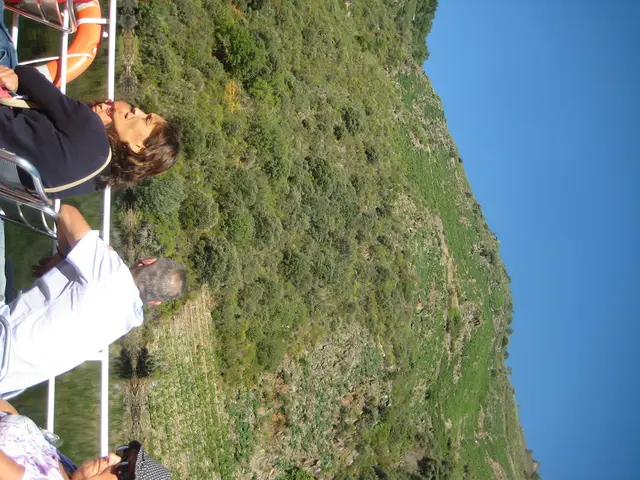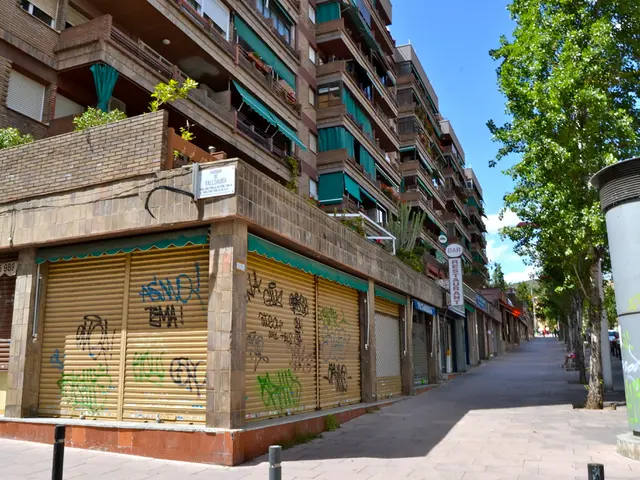Strategies for planning a multi-stop journey through Central America's hotspots
Exploring the Rich History and Culture of Central America's Archaeological Sites
Central America offers a captivating glimpse into the past through numerous pre-Hispanic archaeological sites. The region's heritage, shaped by civilizations like the Maya, reveals itself in breathtaking stone monuments and well-preserved cities.
In Guatemala, Tikal–an influential political hub until the 10th century–stands as one of the largest and most significant Maya sites. These UNESCO-listed pyramids and temples, hidden amongst the verdant expanse of the Peten jungle, are home to howler monkeys, jaguars, and a kaleidoscope of birds.
Another intriguing site is the Copán Ruins in western Honduras, where intricately crafted stelae (stone monuments) illuminate the city's remarkable advancements in astronomy and mathematics. The Hieroglyphic Stairway showcases approximately 2,000 inscriptions, showcasing the sophistication of the ancient civilization.
El Salvador houses the buried pre-Hispanic farming village of Joya de Cerén, named the 'Pompeii of the Americas' due to its pristine preservation under volcanic ash after an eruption in AD 595.
Meanwhile, Belize boasts the Caracol, the country's tallest structure hidden within the dense Cayo jungle. From its peak, visitors can savor far-reaching views of the rainforest and mountains.
Central America's Pacific Coast: A Paradise for Surfers
Central America is more than just its history; it showcases some of the world's best surfing opportunities along its sun-kissed Pacific coastline.
In Nicaragua, the laid-back beach town of San Juan del Sur exudes charm for surfers and bohemian types alike, offering golden sands and a vibrant nightlife. The neighboring towns of Popoyo provide a serene escape, perfect for those seeking tranquility.
El Salvador offers its share of idyllic surf towns, where colorful, mural-dotted streets meet curvaceous black-sand beaches. El Tunco and El Zonte enchant tourists with their polished cafes, bars, and restaurants.
Coiba National Park, located in Panama's Gulf of Chiriqui, continues to dazzle surf enthusiasts with its magnificent waves.
Embracing the Rhythms and Beauty of the Caribbean
Central America's Caribbean coast offers a taste of paradise, tantalizing travelers with pristine beaches, turquoise waters, and vivid cultural experiences.
The islands of Belize, specifically Caye Caulker, seduce with their powdery white sands, palm-fringed cerulean sea, and proximity to the legendary Great Blue Hole – an underwater chasm that provides crystal-clear diving waters teeming with marine life.
The Honduran islands of Roatán and Utila provide susurrus-soft sands and inviting curacao-blue shores, offering an array of eco-conscious diving expeditions.
Nicaragua's Corn Islands blend brochure-perfect beaches with Creole culture and cuisine, offering a captivating alternative to the country's diverse landscape.
Celebrating Culture and Community
Outside the Caribbean coast, a wealth of Indigenous groups thrive, preserving ancient traditions and customs throughout the region.
Visiting the picturesque villages lining Lake Atitlán in Guatemala offers a glimpse into Mayan spirituality, showcasing colorful markets, laid-back tranquility, and a connection to the region's rich cultural heritage.
The Lenca community, Honduras' largest Indigenous group, offers an authentic taste of their culture along La Ruta Lenca, a grassroots tourism initiative. Travelers can witness the pottery heritage of La Campa while catching a Guancasco ceremony, complete with enchanting folk dances.
Panama's self-governing Guna community inhabits the San Blas islands, offering a window into a culture that still follows unique language and mola textile traditions (distinctive, multi-colored clothing patterns).
In the Dominican Republic, spiritual rituals and musical traditions, like syncretism – a fusion of Catholic and African religious practices – can be witnessed during the country's many patron saint festivals, particularly in the vibrant capital of Santo Domingo.
Adventure Awaits in Central America's Majestic Landscapes
Beyond its cultural treasures and coastal wonders, Central America's soaring volcanoes, cloud forests, and cave systems beckon the adventurous.
Nicaragua presents itself as a pioneering destination for thrill-seekers, with hiking trails surrounding Mombacho and Masaya volcanoes, offering panoramic crater views. Ometepe Island, located on Lake Nicaragua, makes a mesmerizing exploration, showcasing two volcanoes, nature reserves, cocoa farms, and waterfall trails.
Barú Volcano National Park in Panamá remains a sanctuary for wildlife enthusiasts, where they can spot resplendent quetzals, black-bellied hummingbirds, and various primate species.
El Salvador flaunts El Imposible, its largest national park, with verdant forested slopes, while Los Volcanes National Park boasts 14 volcanic peaks. Santa Ana Volcano, in particular, features a breathtaking jade-colored crater lake, streaming amid marbled rock.
Exploring Actun Tunichil Muknal (ATM Cave) in Belize offers a distinct adventure, with visitors traversing mystical caverns and learning about the ancient Maya city's spiritual significance.
Savoring the Rich Flavors of Central America's Gastronomy
Truly immersing oneself in Central America involves tasting its diverse and flavorful cuisine.
Guatemala's national dish, pepián, showcases the synergy between Mayan and Spanish influences, comprising a spiced chicken dish seasoned with tomatoes, onions, and various spices. Kak'ik, another staple, is a Mayan-style turkey stew prepared with chilies, tomatoes, and garlic.
Nicaraguan gustatory delights include nacatamal, composed of corn tortillas filled with meat, and indio viejo, a succulent beef stew flavored with corn, sweet peppers, and tender shredded meat.
Honduras captivates with the delectable Garifuna cuisine, featuring dishes such as machuca, a coconut, fish, and plantain amalgamation.
The Dominican Republic's gastronomy captivates through a fusion of Taino, African, and European influences, offering an unparalleled culinary experience alongside fresh seafood.
Looking beyond the coastal charms, Indigenous cultures, and adventurous activities, Central America proves itself to be an exciting realm of rich history, vibrant cuisine, and cultural traditions waiting to be explored.
In the realm of leisure and personal growth, a Central American tour could encompass learning about the intricacies of local food-and-drink such as Guatemala's pepián or Nicaraguan nacatamal, interwoven with workshops on home-and-garden practices like pottery in La Campa, Honduras.
After a day of immersing oneself in the learning experience, a relaxing evening could be spent at a tranquil home-and-garden setting, perhaps accompanied by a glass of locally produced wine. Alternatively, one could venture out to partake in the vibrant nightlife scene in San Juan del Sur, Nicaragua, before embarking on a travel journey to the next cultural destination a few days later.







